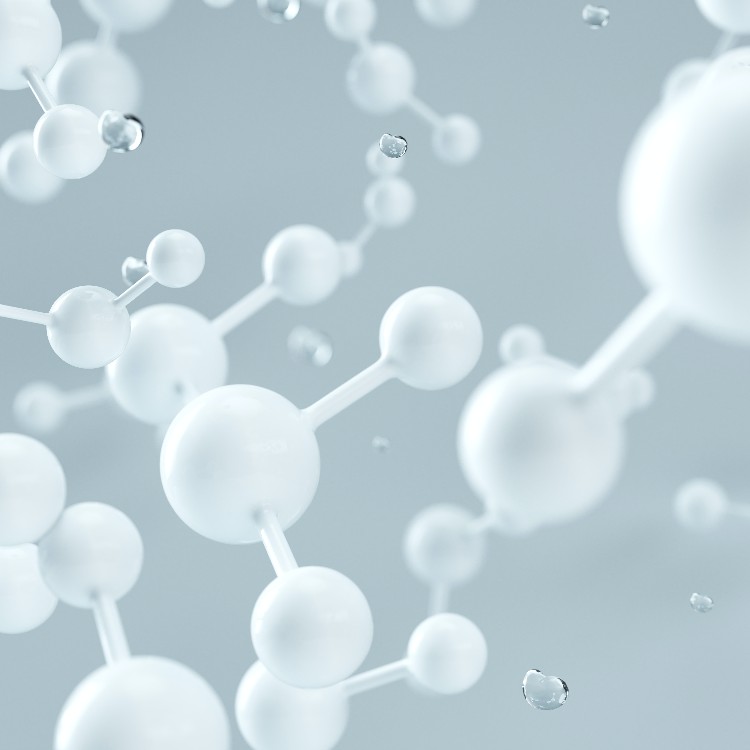Sudden weight gain in perimenopause is a prevalent concern among women, often accompanied by hormonal fluctuations and various health challenges. Thankfully, there are numerous effective strategies to combat this issue. In this guide, we are explaining sudden weight gain in perimenopause and different ways to manage it.
Causes of Perimenopause Weight Gain
Fluctuations in estrogen levels are a major factor that leads to weight gain. It increases abdominal fat deposition and decreases muscle mass, contributing to shifts in body composition during this transitional phase of life.
Changes in Estrogen Level
Estrogen is a hormone responsible for the development and regulation of the female reproductive system. It plays a crucial role in controlling the menstrual cycle, supporting bone health, and influencing different aspects of physical and emotional well-being.
During perimenopause, frequent fluctuations in estrogen levels affect weight gain in several ways. Estrogen influences metabolic health. When its levels decrease, your body burns fewer calories, leading to weight gain. The lower your estrogen levels, the more fat is stored around your abdomen, which changes your body shape.
This important hormone also impacts your muscle mass, so as estrogen levels decline, you may lose muscle. Lack of muscle tissue further slows down your metabolism and contributes to weight gain.
Ghrelin Level Increase
Ghrelin is a hormone that signals hunger in your brain. During perimenopause, changes in ghrelin levels can influence weight gain. When ghrelin levels are high, you feel hungry and consume more calories. Ghrelin can also interact with other hormones involved in metabolism and fat storage, further affecting your weight. In perimenopause, ghrelin levels frequently fluctuate, which impacts appetite and leads to weight gain.
Cholesterol Level Difference
During perimenopause, changes in cholesterol levels can significantly impact weight gain through various pathways. The decline in estrogen levels often leads to elevated LDL cholesterol and reduced HDL cholesterol.
High LDL cholesterol levels are linked to insulin resistance and metabolic syndrome, exacerbating weight gain. Besides, cholesterol is a precursor for steroid hormone synthesis, including estrogen, and disturbances in cholesterol levels can disrupt hormonal balance. That creates a vicious circle of negative effects for body weight, health, and appearance.
Muscle Mass Loss
As estrogen levels decline during perimenopause, muscle mass declines. Since muscles burn more calories than fat, a decrease in muscle mass can lower your metabolism, making it harder to lose weight.
Insulin Sensitivity Changes
Insulin regulates blood sugar levels and many aspects of metabolism. The ability of your cells to respond to insulin is determined by insulin sensitivity. During perimenopause, insulin sensitivity decreases, leading to higher insulin levels in the blood. High insulin levels promote fat storage, especially in the abdominal area. Additionally, decreased insulin sensitivity can lead to higher blood sugar levels, which may increase hunger and food intake, which further contributes to weight gain.
How to Prevent Sudden Weight Gain in Perimenopause?
It is difficult to counteract the effects of hormonal shifts. However, don’t lose hope! There are numerous ways to maintain a healthy weight, even in perimenopause.
Increase Physical Activity
Physical activity helps preserve muscle mass, which naturally declines with age and hormonal changes. Cardio exercises like walking, jogging, or cycling boost your metabolism, making it easier to maintain a healthy weight. This is important because muscles burn more calories than fat, so maintaining muscle protects you from weight gain.
Apart from body structure, exercise improves insulin sensitivity, helping to regulate blood sugar levels and reducing the risk of developing insulin resistance. Regular physical activity also improves mood and reduces stress, which is helpful during the emotional and physical changes of perimenopause.
Try to have at least 2-3 moderate-intensity aerobic activity per week, along with muscle-strengthening exercises, to prevent weight gain in perimenopause and maintain overall health.
Focus on Healthy Fats and Proteins
Avocados, nuts, and olive oil contain healthy fats that help you feel full and satisfied, and reduce your chance of overeating. Essential fatty acids (omega 3 and omega 6 fatty acids) support hormone production and metabolism. Proteins from meats, fish, eggs, and legumes are necessary for preserving muscle mass, which is necessary for a healthy metabolism.
Protein-rich foods also take longer to digest, keeping you fuller for longer periods of time. By including these foods in your diet, you can regulate your appetite, support muscle maintenance, and promote a healthy weight during perimenopause. In this period, it is more important than ever to choose natural foods from quality sources.
Start Taking Quality Supplements
Apart from weight gain, there is a connection between water retention and perimenopause. Due to hormonal fluctuations, it becomes pretty difficult for your body to get rid of excess fluids. To facilitate this process, you can try VANA Smart Liquid™.
VANA is a premium food supplement based on polyphenols, with the addition of potent plant ingredients. Its liquid formula will help you balance your weight and fluid level, and it will also:
- Help you detoxify your body
- Provide relaxation during this transitional period
- Balance your gut and digestion
- Let you realize your full potential and increase your overall vitality.
Sleep Well
Poor sleep can disrupt the hormones that regulate appetite (ghrelin and leptin), leading to increased hunger and cravings. Lack of sleep also affects your metabolism, making it harder for your body to burn calories efficiently. Besides, sleep deprivation can increase stress levels, which further impacts weight gain. Try to have at least seven hours of quality sleep each night to support your overall health and weight management during perimenopause.
Frequently Asked Questions
What causes rapid weight gain in females?
The major culprit for rapid weight gain for women is hormonal changes during puberty, pregnancy, and menopause. Weight gain occurs as a result of hormonal imbalances that affect metabolism and fat distribution. Additionally, certain medications, such as corticosteroids or antidepressants, can cause weight gain as a side effect. Poor diet and lack of physical activity are also significant contributors to rapid weight gain. Sitting for long periods of time can also lead to increased fat storage.
Does menopause weight gain go away?
Menopause pounds won’t go away on their own, but that doesn’t mean they are permanent. With lifestyle changes, you can manage and even lose weight during and after menopause. Eating healthy foods based on quality fats and proteins will speed up your metabolism and support weight management. Regular exercise will help you burn more energy and maintain muscle mass, which facilitates weight control.
How long does menopause weight gain last?
For some women, weight gain may occur gradually during perimenopause and continue into menopause. This period usually lasts several years, typically around seven years, but it depends on different factors. However, weight gain during menopause is not always permanent. With lifestyle changes such as a healthy diet and regular exercise, many women can control and even lose their weight during and after menopause.





